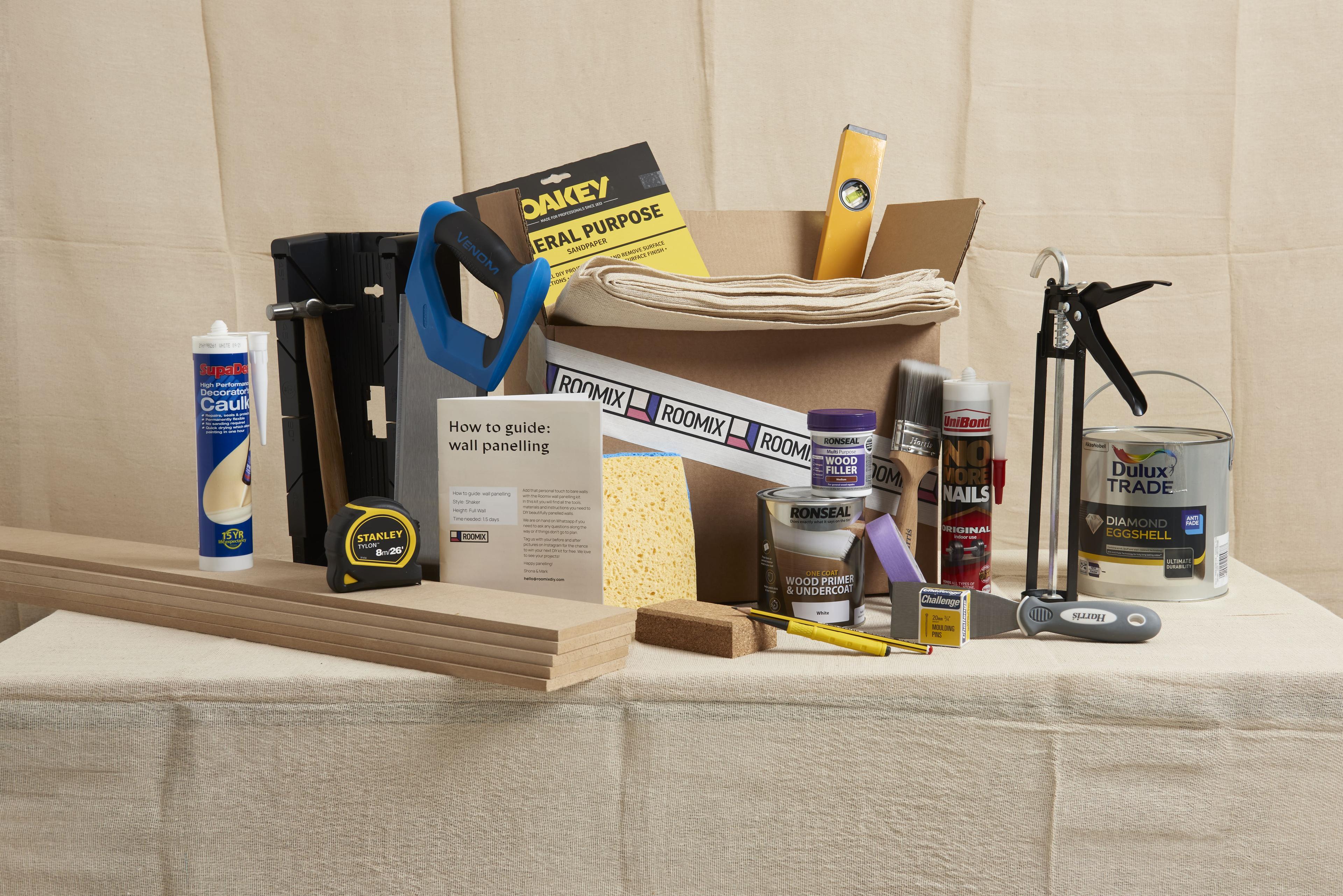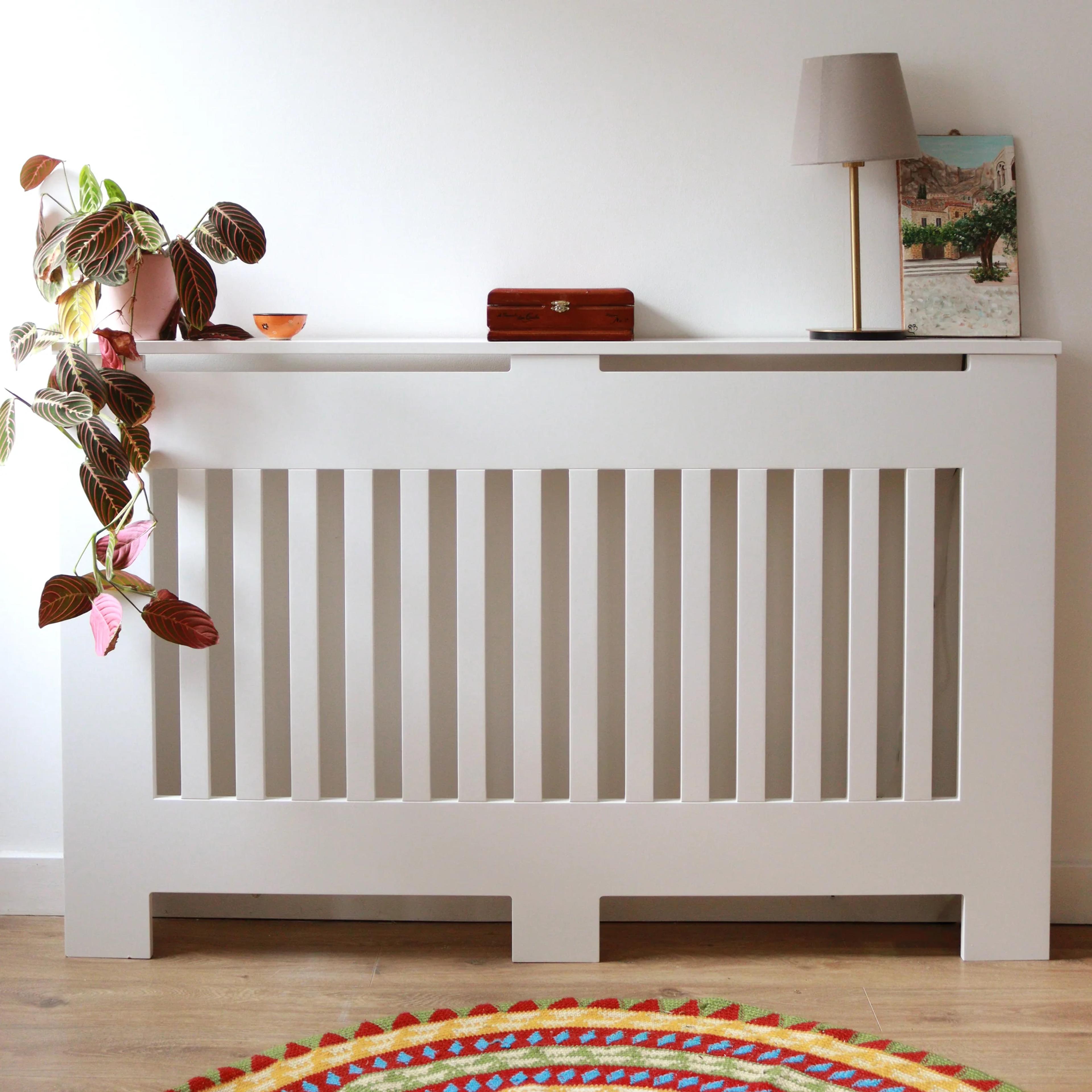Roomix: rewriting the renovation rulebook

Izzy Payne
31.01.2024

Technology and social media have forever changed the way we decorate our spaces. The tastemakers are no longer an elite inner circle of designers, now the everyman can take to the internet to influence others to pick up the paintbrush. The power is in the hands of the homeowner more so than ever before.
Roomix is fueling this new era of DIY. With their bespoke kits, everything you need to undertake a new design project in your space comes delivered in one box. What was once a challenging undertaking has been made simple with this one-stop shop for all things interior renovation. We spoke to Shona Chalmers, co-founder of Roomix about how they’re changing the renovation game.
Neverbland: What's your role in Roomix and how did you get started?
Shona Chalmers: So I am one of a two-person co-founding team with Mark Apter. It started a couple of years ago at a time when we were in and out of Covid-19 lockdowns and there was this huge boom happening across the home and renovation sector. Everybody was doing DIY because people couldn’t move house or go outside much, plus they had so much extra time. There was this sudden rush of effort to make your space more adaptable and more flexible to this new lifestyle that we suddenly all adopted working from home all the time and also people had the time and the energy.
During that time, my co-founder and I ended up buying our first properties. He was starting a massive renovation project on a cottage from the 1700s, and I was beginning to renovate my central London flat. Mark's ambition for his property was a total renovation - he needed to gut it to restore it. You know - making it kind of live up to its potential as this beautiful old building. My ambitions were more like hanging a heavy mirror and hanging shelves and making it kind of reflect my personality.
NB: Did you both have a background in interior design?
SC: Mark was one of my clients. I used to work in the Founders Factory on the venture design team coming up with ideas for new businesses, and Mark was in the innovation team at L'Oreal. We'd worked on beauty concepts together in our previous lives. I wrote a blog post about a home renovation idea I had and Mark responded and said: “Oh my god, I'm thinking of a similar thing!”
We ended up just working on it a lot of evenings and weekends. We got some initial investment through Founders Factory and we went full-time just over two years ago.
NB: Who is Roomix for?
SC: Our target audience is mostly millennial women who have never really been marketed in this category before. We know that they've got a massive appetite to do home improvement, but they're often short on time or disposable cash. If we can get those people from that place of “God, I really want to do that, but I don't know where to begin” to give them the tools and motivation to do it then we would be a success.
After a couple of years of doing this, and more recently as a result of our work with Neverbland, we’ve realised that we’ve also got a big male customer base that we weren’t particularly targeting. We’ve also got a customer base within the older generations, perhaps because they have more time to dedicate to home renovations. We’ve seen that designing something well has led to massive category expansion. It’s great to see that our product allows more people to renovate their homes.

NB: How does Roomix compare to other DIY businesses?
SC: The DIY industry when you dig into it had remarkably low innovation for about 30 years. There are big household names like B&Q and Homebase, but they still target the older male demographic, have an old-fashioned vibe and the overall e-commerce experience isn’t great.
When you go into one of these places and you see signs for emulsion or adhesive - it's that language that feels very tradesperson-orientated. People might go in to get the bits to do some panelling in their living room, but find that they don’t know what caulk and adhesive they need, they didn’t realise how many different types of MDF there are. People don't even have the vocabulary necessary to know exactly what they're looking for to get that final look. Our core principle is that Roomix thinks of your final project first. You come up with the idea of what you want the outcome of your project to be, and then we break it down into the easiest and most intuitive methods.
NB: How do you think Roomix will be affected by the expedited trend cycle we have these days?
SC: That's a great question. I think at a macro level, trends within the interior design space aren't as rapid as they are in fashion. They take longer to come up and reach their peak and they have a much longer tailwind as well, so we launched with panelling and it's still incredibly trendy two years on. I think it’s because of the permanency of what you do to your home. It's a bigger commitment. It's not like getting your new top and then deciding you hate it a week later.
There's also an element of people's taste and people's style that is a bit trend-agnostic, so the cycle doesn’t always apply. Some people like a sleek and minimalist kitchen and some people like the shaker-style farmhouse kitchen - these are both still popular because people have different styles and tastes, so it's also about helping people get what's right for their aesthetic.
NB: Do you feel like social media is a positive or negative influence on these interior trends?
SC: It’s amazing to see these new ideas and new creativity popping up as a result of social media. We have a strong presence on Pinterest and Instagram to keep informed of interior trends and use it as a tool to increase brand awareness. Everybody that I know who thinks about their home their first port of call is Pinterest or Instagram. We invest a lot of time and energy building our social platforms. In doing so, we’ve spent a lot of time and energy speaking to creators. A lot of our sales come directly from Instagram. Being up to date with what people are posting about is key to Roomix.

NB: Have you launched any products as a result of social media trends?
SC: We've recently launched a Montessori range and that was in part inspired by social media because a lot of our customers/creators have had kids so they’re building out their nurseries. We also know that when people experience a big life transition, like having a kid, they tend to want to invest more time and energy into their homes. We built our Montessori range partly because of the customers/creators we were speaking to, but also because it’s a hugely popular trend to have this Montessori style furniture-like floor beds.
They work well with the aesthetics of our other projects and I do think it’ll be a longstanding trend because it's so clean. It's so stylish. It's so sophisticated. There's so much of it based on the theory that by having furniture like this, you’re elevating a kid’s sense of independence and heightening their thirst for exploration, so it's got some really interesting theory behind it too.
NB: What is your vision for the future of Roomix?
SC: I think that the biggest shift that we've taken as a business over the last six months is something that we’ve taken inspiration from the fashion industry - we're more and more focusing on things that we can provide to people that are custom made to their space.
When you look at other people doing made-to-measure, or custom-made products, people tend to go to places like Etsy. The problem with Etsy is that there are thousands of similar choices that cause massive overwhelm. You’ve got to sift through thousands of similar products from different suppliers, read countless reviews, and compare price points for hours. And after all that, the Etsy technology itself only allows a couple of fields of customisation which then requires a lot of back and forth with the seller to ensure you’re getting the right thing. It's a lot of heavy lifting for the consumer.
Roomix’s technology allows for full customisation without the work. You get to fully customise your products and get exactly what you want to be delivered to you. Bespoke building products is the route we’re going down, as it suits our target audience so well. Personalisation over off-the-shelf products is the future.
NB: So true. All too often you buy something from off the shelf and then you spend ages trying to jam it into your space, just trying your best to make it work.
SC: Yeah, exactly. People need their spaces to be so versatile now. They need to be hosting spaces, working spaces, living spaces, and relaxation spaces but also very practical functional spaces. Getting the storage solution right is important. Getting a full team of interior designers, joiners and tradespeople in to help is still out of reach for a lot of people, so finding solutions that are more bespoke to them and their space is achievable with Roomix.

NB: How do you ensure the quality of Roomix products?
SC: We are very selective in the suppliers that we work with so a lot of our products are drop-shipped from artisans, timber merchants and joinery workshops. We work with some real experts who are real masters of their craft.
We work with some amazing people who come up with really innovative solutions to our customer’s issues. Like, if somebody's got an old Victorian house with a wonky alcove and we need an exact shelf that might need to be wider at the front than it is at the back, and it might need different levels of support and that needs to be able to hold this you know ancient plate that I got from my grandmother and blah and blah. It’s those kinds of challenges that our suppliers are great at coming up with solutions for. It’s about working with really trusted suppliers.
NB: Has Roomix got any sustainability policies?
SC: In general building with wood is a fairly sustainable material. It captures carbon and unless you're burning it, having your house made full of wooden products means that it's still storing that carbon so as far as materials go, it’s pretty great. We're very strict about the kind of certification around that wood and our main paint supplier is Lick which is a very conscious brand. The other thing when you look at our business model is that our products are bundles, so we're sending you kind of 30 products in one go versus 30 individual packages. We’re also finalising a deal with our new charity partner.
Beyond sustainability, we believe Roomix has an important social mission as well, in terms of giving people a way to create homes they love. We recently read a piece of research about the positive mental health benefits of living in homes that you feel safe in and proud of. That feeling of safety and pride in your home measures higher on a happiness scale than things like the size of your salary, your job or even the quality of your relationships. It’s nuts! Your home has such a profound impact on your mental health.
NB: So you’d say that the relationship between our homes and our mental health is something that gets looked over a lot?
SC: Absolutely. I don't think enough people give the home environment enough emphasis when talking about mental health. Having a secure, happy, comfortable home that you’re proud of can give you a feeling like no other. It sounds sort of frivolous to say that doing panelling in your bedroom could change the way you feel about your space but that's also been proven as well. The more you invest into your space, the better you feel about it the better you feel and the more in control you feel. If you can give people a way to take control over the design of their space, they'll feel happier and more empowered in other elements of their life too. That is what’s important to us.
NB: Would you look to kind of move into doing something more renter-friendly at some point?
SC: Yeah, we have thought about that a lot recently. Renters have similar needs but a slightly different context. Often if you change something you need to be able to make good at the end of your tendency. When we started looking into it loads of renters do a lot of DIY despite the rigid deposit rules these days. We also found that the renters who do DIY in their properties tend to stay way longer and are much better tenants.
A lot of our storage solutions are quite stane alone and our shelving is good enough quality to be taken down and put up elsewhere if needs be - making them appealing to renters. Our panelling is a little trickier. We’ve got some ideas in the works about making it removable and thereby renter-friendly.
We’re working on flexible office solutions at the moment that would appeal to renters and homeowners alike. The idea would be - I’ve got this awkwardly shaped nook in my room or a weird space under my stairs - how can we fit a desk in it? And it needs to be big enough so I can work at it, but I also have a three-year-old and so I need to store toys underneath it. These sorts of things aren't available on the high street. You need bespoke design. That is where Roomix comes in.
NB: Well, I would love a desk in my room but it’s a very awkward shape and size.
SC: Yeah, like you’d need your desk to fold away when you aren’t using it or fit nicely within the challenging shape. I think when you say it's like the shape of your room isn't very normal, nobody has a “normal space” for a working environment now. It's like we've all started working from home multiple times a week and few of us have this perfect office space at home, with no distractions and a perfectly square room. We need customised solutions that work for you and your space.
NB: Can you share any insight into the Roomix design process?
SC: So it varies depending on the product we’re designing, but the general rule of thumb is to start by discussing trends, looking at what our creators are doing, and getting feedback from our customers. We do a lot of content-based research on Instagram and we do trial projects. I'd love to tell you that when we launch all of our products are absolutely perfect and our how-to guides are perfect but when they go live it can be a bit of a calibration process.
We'll hear from customers that the product is great, but they wish it would be 10cm shorter or that they found Step Two of the how-to guide confusing. Then it's about working with the suppliers and our in-house team to fine-tune the product.

NB: Have you got anything coming up that you’d like to shout out?
We’re increasingly focused on giving people customised solutions for their homes. Traditionally, if you want something to fit an unusual or tricky space you have to pay for a professional - which is really expensive. We think that doesn’t have to be the only solution.
Our alcove shelving and airing cupboard shelving are both very popular for these reasons. There is very little alternative as standard shelves just don’t fit but tradespeople are too expensive for jobs like this. We give you something that’s exactly the right size and shape for a fraction of the cost.
We have just launched custom-sized radiator covers too. Most radiators are actually their own shape and size and yet your bog standard covers come in very set sizing. Our radiator covers are designed to your exact dimensions and look as though they were built into your unique space. Building bespoke means you end up with a very high-end finish.



